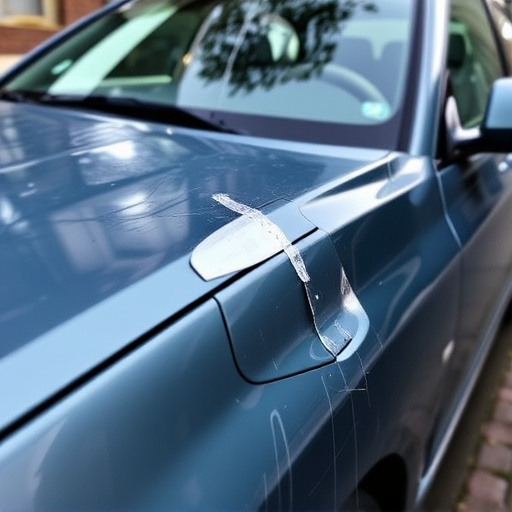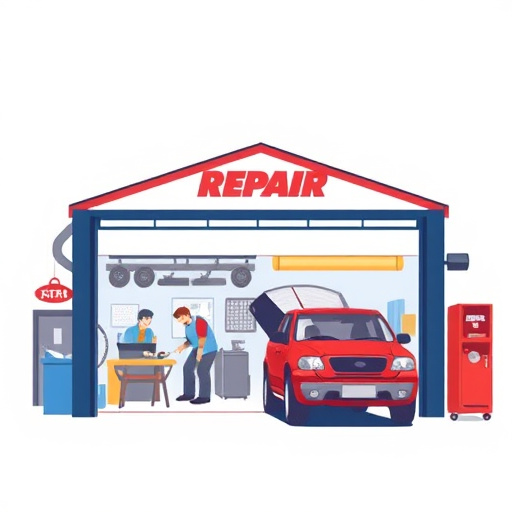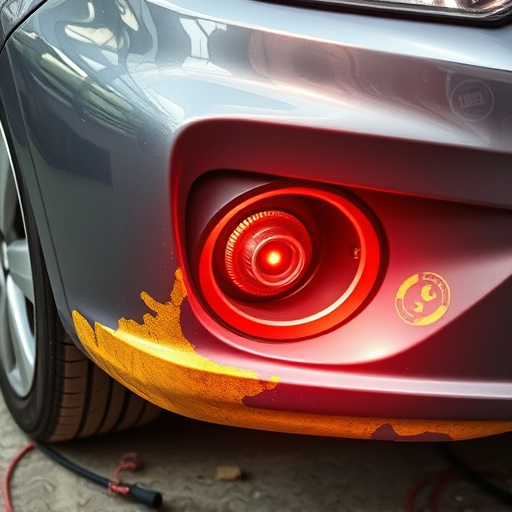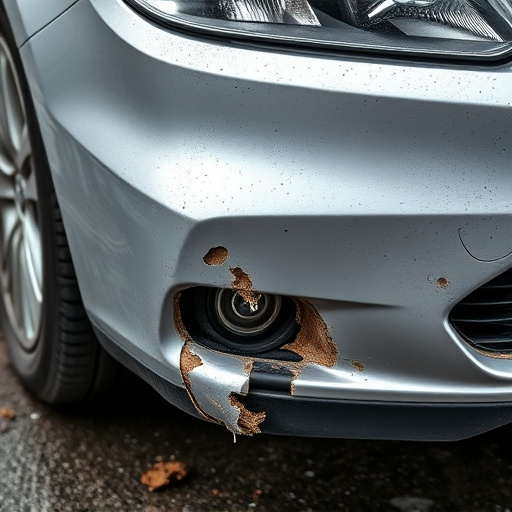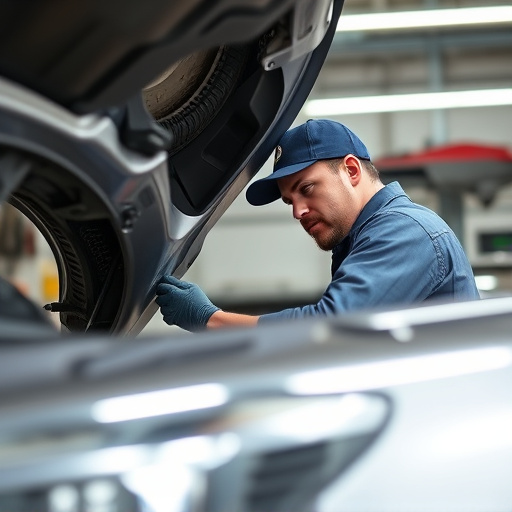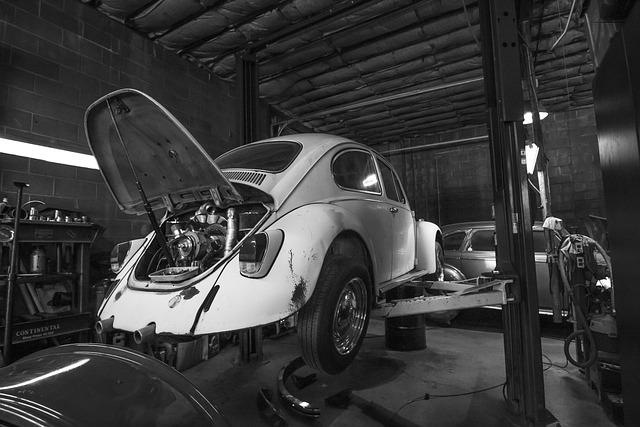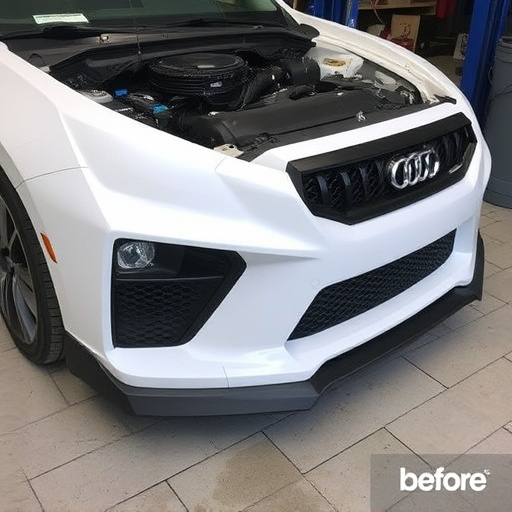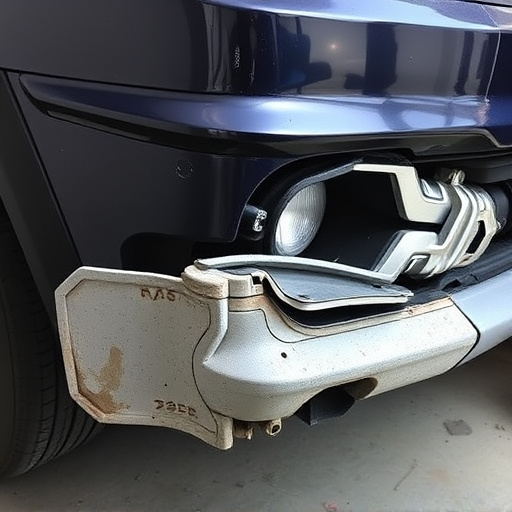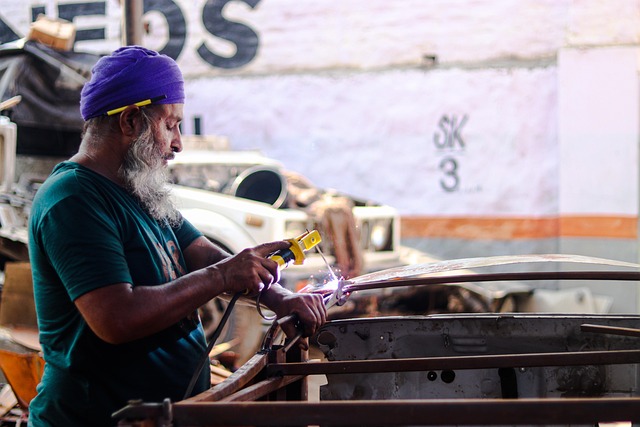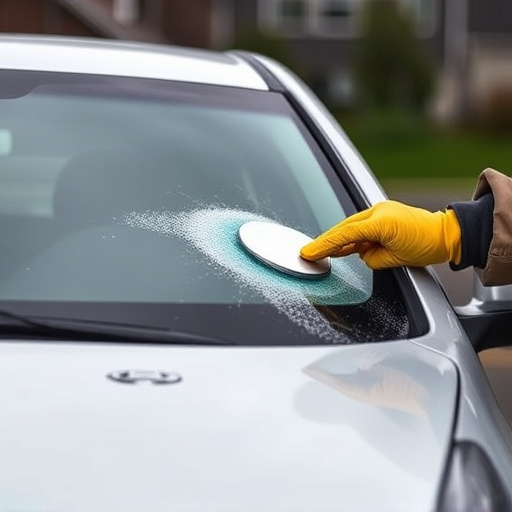Fender dent damage, caused by collisions, hail, or bumps, requires specific repair techniques. Basic tools include pliers, screwdrivers, and a hammer; for complex repairs, consider an air compressor and heat gun. Specialized materials such as body putty, primer, paint, and clear coat are crucial for seamless restoration. A step-by-step guide offers DIY instructions for minor dents, involving damage assessment, filler application, priming, curing, and painting. For severe cases or lack of confidence, professional fender dent repair services at a collision center are recommended.
“Looking to fix hail damage on your beloved Fender? This comprehensive guide is your go-to resource for understanding and mastering fender dent repair. We break down the causes and types of common Fender dents, equip you with the necessary tools and materials, and provide a detailed step-by-step process for effective repairs. By the end, you’ll be well-prepared to restore your Fender to its original condition.”
- Understanding Fender Dent Damage: Causes and Types
- Tools and Materials for Effective Fender Repair
- Step-by-Step Guide to Fixing Hail Damage on Your Fender
Understanding Fender Dent Damage: Causes and Types
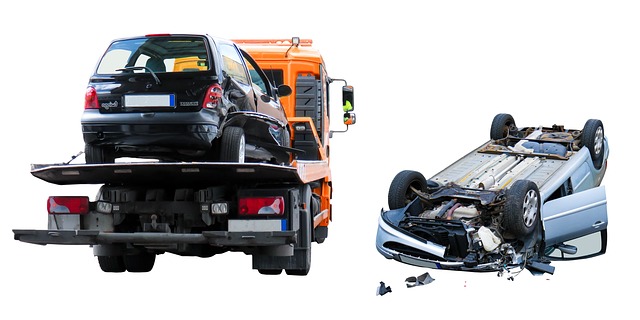
Fender dent damage is a common issue that can arise from various causes, often leaving unsightly marks on your vehicle’s exterior. Understanding the different types and causes of fender dents is the first step in effective fender dent repair. These dents typically occur due to minor collisions, hailstorms, or accidental bumps, resulting in depressions, indentations, or even complete crumpling of the fender panel.
There are several types of fender dent damage, each requiring specific repair techniques. Some common types include shallow dents, known as dimples, which can be caused by small debris, and deeper, more complex dents that may involve bending or cracking of the metal. Other types include edge dents, where the impact occurs along the fender’s edge, and large, dented areas resulting from more significant collisions. A car body shop or vehicle repair service with experience in fender dent repair can assess and address these various issues effectively.
Tools and Materials for Effective Fender Repair
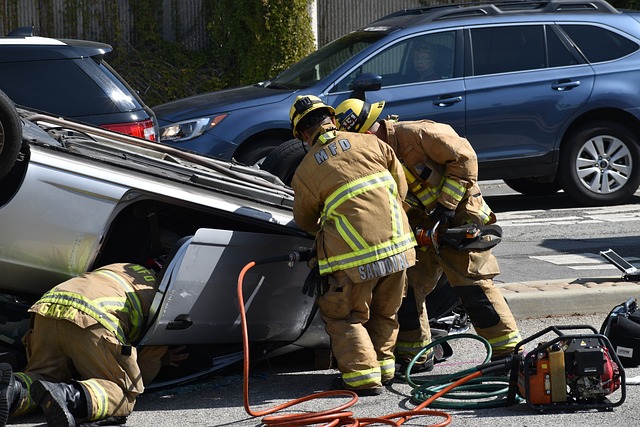
To successfully tackle fender dent repair, especially for hail damage, you’ll need a specific set of tools and materials. Basic auto body work requires a few essential items such as a set of pliers (for gripping and adjusting), screwdrivers (to remove and replace panels), and a hammer (for carefully bent metal). For more intricate repairs, consider an air compressor to help remove dents and a heat gun to soften hardened metal for easier shaping.
In addition to these tools, you’ll need specialized materials designed for fender dent repair, like body putty or composite filling compounds, primer, paint, and possibly clear coat. These will enable you to seamlessly blend repairs, ensuring your vehicle’s exterior looks as good as new after a collision at a trusted collision repair center or auto body work shop.
Step-by-Step Guide to Fixing Hail Damage on Your Fender

Hail damage can leave your fender looking like a puzzle with missing pieces, but don’t worry—repairing it yourself is possible! Here’s a step-by-step guide to help you restore your fender to its original condition. First, assess the extent of the dent and gather your tools: a putty knife, plastic filler (or Bondo), sandpaper, primer, and paint that matches your car’s color. Begin by removing any loose debris from the dented area using a vacuum or compressed air. Next, gently pry out the damaged section of the fender using a flat-head screwdriver, taking care not to scratch the surrounding panel. Once the dent is accessible, use the putty knife to apply plastic filler and smooth it into shape. Allow the filler to dry completely before sanding it down with fine-grit sandpaper until the surface is even with the rest of the fender. After cleaning off any dust, prime the repaired area and let it cure as per the manufacturer’s instructions. Finally, paint over the primed section using your car’s matching color, ensuring a seamless finish. For more severe fender dents or if you lack confidence in your DIY skills, consider visiting a collision repair center for professional fender dent repair services, often accompanied by tire services and other comprehensive collision repair options.
Fixing hail damage on your fender is a manageable task with the right knowledge and materials. By understanding different types of fender dent damage and utilizing simple tools, you can effectively restore your vehicle’s exterior. Following the step-by-step guide ensures a successful fender dent repair, saving you time and money compared to professional services. With a bit of patience and the appropriate methods outlined in this article, you’ll be well-equipped to tackle hail damage on your fender.
